
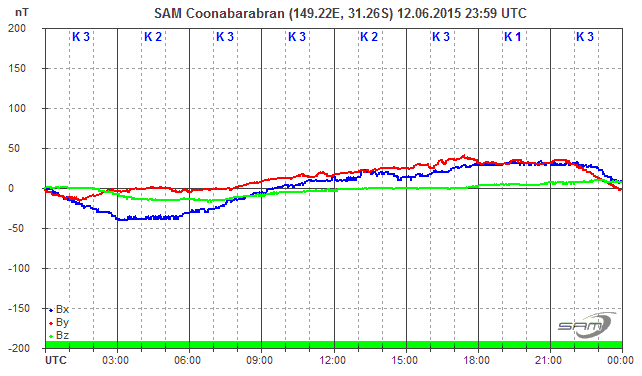
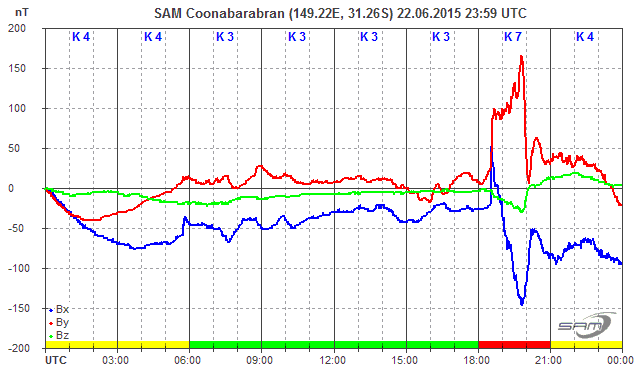
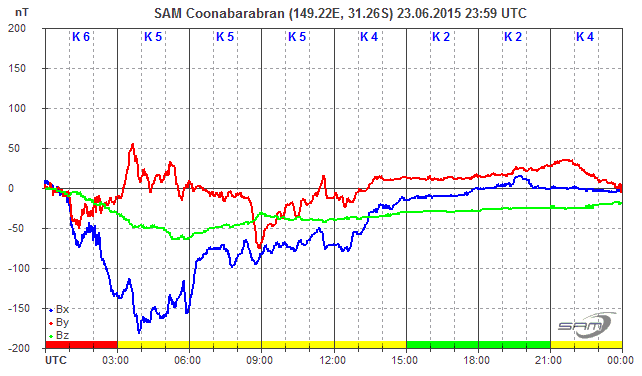
EPSO Geomagnetic
Observations - Examples of quiet and disturbed
conditions
| Current EPSO
Magnetometer observations |
Example of quiet
geomagnetic conditions |
 |
 |
| Example of commencement
of geomagnetic storm |
Example of disturbed
geomagnetic conditions |
 |
 |
| Current Kp index from
the NOAA/SWPC |
Kp measured during a
geomagnetic storm (June 22-25, 2015) |
 |
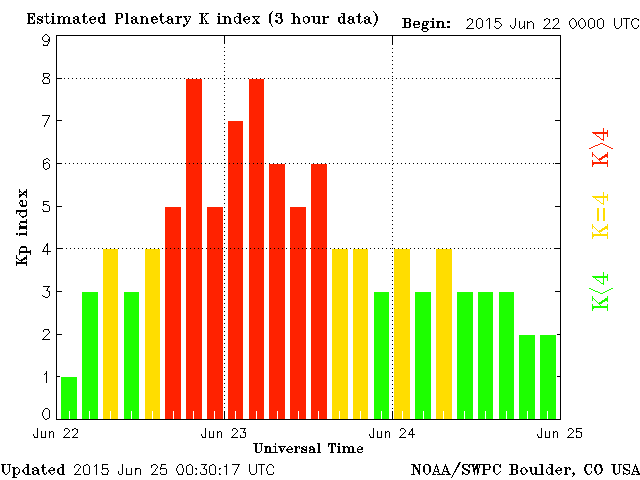 |
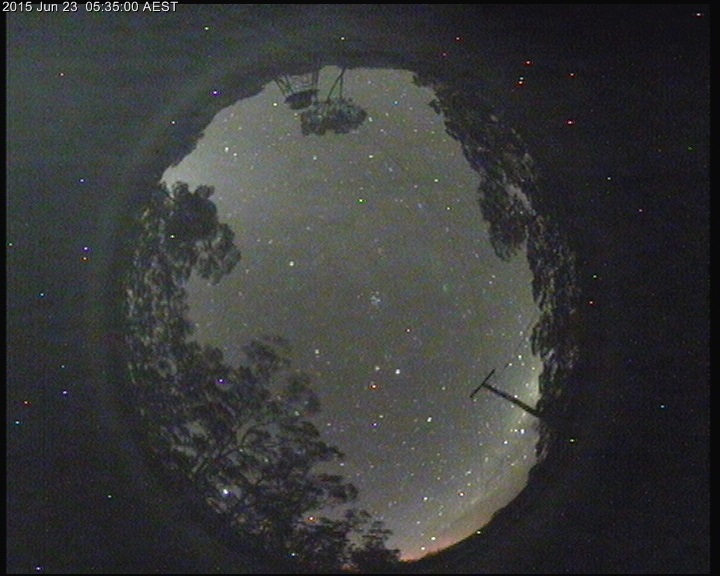 During the
geomagnetic storm of 23rd June, 2015 Aurora
Australis/Borealis were observed around the globe at places far
removed from the Earth's polar regions. These sightings were
widely
recorded in the Australian news media. At
Coonabarabran the aurora appeared as a reddening on the southern
horizon, which was captured in the adjacent EPSO
all-sky-camera image logged at 5:35am AEST* on the 23rd
January (*UTC time = 19:35 on the 22nd January), where it appears
as a pink tinge at the bottom of the picture. This
reddening, resembling a sunrise twilight, was visible at
Coonabarabran from around 5:20-5:55am, and for those with a clear
southern horizon the view would probably have been somewhat more
spectacular that the adjacent grainy image. It is
possible that early morning observers may have also noticed this
aurora moving and flickering.
During the
geomagnetic storm of 23rd June, 2015 Aurora
Australis/Borealis were observed around the globe at places far
removed from the Earth's polar regions. These sightings were
widely
recorded in the Australian news media. At
Coonabarabran the aurora appeared as a reddening on the southern
horizon, which was captured in the adjacent EPSO
all-sky-camera image logged at 5:35am AEST* on the 23rd
January (*UTC time = 19:35 on the 22nd January), where it appears
as a pink tinge at the bottom of the picture. This
reddening, resembling a sunrise twilight, was visible at
Coonabarabran from around 5:20-5:55am, and for those with a clear
southern horizon the view would probably have been somewhat more
spectacular that the adjacent grainy image. It is
possible that early morning observers may have also noticed this
aurora moving and flickering.